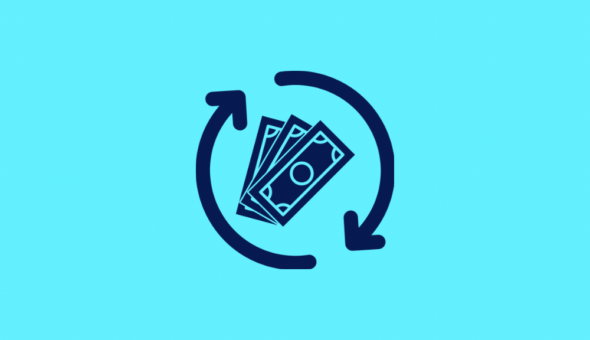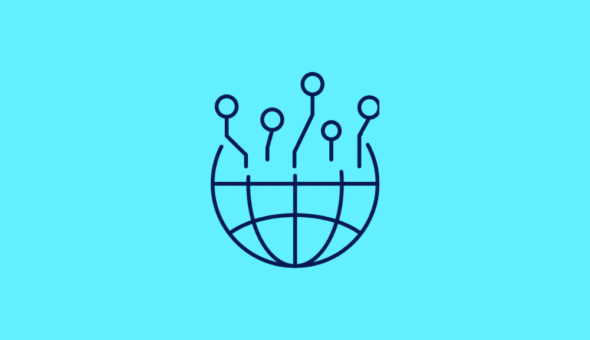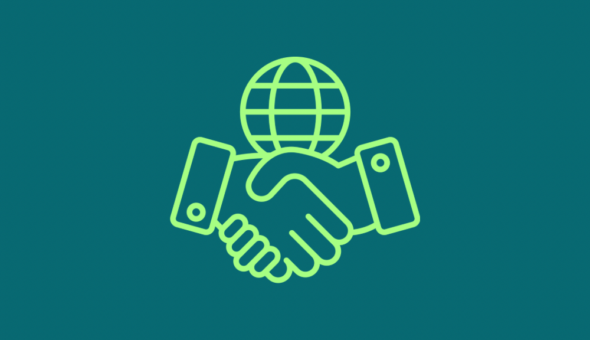Dr Paul Goode is Senior Lecturer in Russian Politics at the University of Bath’s Department of Politics, Languages & International Studies, and leads the department’s research cluster on Nationalism, Populism, and Radicalism.
On 18 March, Vladimir Putin secured a fourth term in office as President of the Russian Federation. Officially he received 76.66% of the vote, with more than 56 million Russians voting for him – a fact that Russia’s state media celebrated as the most votes ever cast for a candidate in any election in Russia. The outcome of the election was never in doubt and Putin barely bothered to campaign. As in previous elections, he ran as an independent though he was backed by United Russia – the pro-Kremlin party created in 2001 to support Putin (though he is not a member). Putin has now been in power longer than Soviet leader Leonid Brezhnev and will surpass Stalin’s tenure by the end of his term of office in 2024.
Seven other candidates participated in the election, with the Communist Party’s Pavel Grudinin taking second place with a distant 11.8%. Notable for his absence on the ballot was Russia opposition leader Aleksei Navalny. After leading a series of anti-corruption protests in 2017, Navalny was barred from competing in the presidential election owing to a prior conviction for embezzlement – a charge that most observers consider to be politically motivated. Navalny instead called for a boycott of the election, while liberal opposition candidates Ksenia Sobchak and Grigory Yavlinsky each received less than 2% of the vote. While the election was a resounding defeat for all candidates not named Putin, it effectively resolved the question of leadership of the liberal opposition. As if to underscore the fact, Sobchak paid an unplanned visit to Navalny immediately following the election and asked him to join her new party. Navalny rejected the offer with barely concealed rage on a live YouTube broadcast.
Russian historian Ivan Kurilla quipped that the main difference between contemporary Russian elections and Soviet-era elections is that Soviet elections tended to be won with 99.9% of the vote, meaning that today’s Russia is about 24% freer. It is also worth noting that Russia’s parliament set the date of the election to coincide with celebrations of the annexation of Crimea (18 March 2014), which many Russians consider to be Putin’s crowning achievement. Nevertheless, these were relatively clean elections compared to previous years, though there was great variation among Russia’s cities and provinces. Moscow previously provided a large portion of opposition votes in elections, but this year it provided a cleanly pro-Putin majority. Other regions like Kemerovo and Chechnya provided reliably fantastic votes for the incumbent.
Perhaps needless to say, the election was far from competitive. For ordinary Russians, the only real intrigue was whether Grudinin would follow through with his pledge to shave his moustache if he failed to get 15% of the vote. But the fact that the election was uninteresting does not mean that the votes were meaningless. Forensic analysis of district-level voting suggests that there may have been as many as 10 million ‘extra’ votes, while polling station webcams around the country showed multiple instances of voters and officials blatantly (albeit unenthusiastically) stuffing ballot boxes. These extra votes undoubtedly went to Putin, but they mattered less for keeping Putin in office than in inflating turnout numbers. Like other ‘electoral authoritarian’ types of regimes, elections help the Kremlin to vet the performance of regional and local officials. In terms of optics, large turnouts also enhance the regime’s claim to legitimacy. Officially, the national turnout was just over 67.5%. However, regional officials informally sought to surpass the so-called ‘70/70’ standard – that is, to produce 70% turnout with a 70% vote for Putin. These informal turnout and vote thresholds provide a metric for allocating central funding for filling holes in regional budgets for infrastructure projects, education, and state salaries.
For Kremlin-watchers, one of the crucial questions moving forward is whether Putin is now a lame duck president. Russia’s constitution imposes a limit of two consecutive terms in office, though Putin managed to circumvent term limits by serving as Prime Minister during Dmitry Medvedev’s presidency (2008-2012). For Russia’s elite, Putin is the guarantor of a vast patronage network, while the system of public politics has evolved such that credible challengers are unlikely to emerge through elections – indeed, this most recent presidential election might be taken as clear evidence of this. Yet the prospect that Putin might leave power could unleash intra-elite conflict, while years of autocratisation have gutted formal institutions that might otherwise serve to contain such conflicts. The possibility of such conflicts was suggested already in 2007, when it was not clear whether Putin intended to leave politics. As internal conflicts heated up among security agencies, the gears of government ground to a halt. A decade later, Medvedev is no longer a viable option to repeat the ‘castling manoeuvre’ thanks to Navalny’s anti-corruption activism – indeed, some argue that he is unlikely to remain as Prime Minister – while Russia’s increased international isolation and its involvement in ongoing conflicts in eastern Ukraine and Syria mean that the stakes in leadership succession are much higher.
Regardless of whether Putin intends to step down, it seems certain that the Kremlin will do its best to convince the world that he will remain. In this vein, public figures like nationalist Vladimir Zhirinovsky started calling for Putin to be made president for life, while RT’s Margarita Simonyan tweeted that Putin was no longer president but vozhd – a Russian word used to describe tyrants like Stalin – suggesting that he is now above all laws and institutions. Similar calls seem inevitable over the next six years, though Putin’s rubbishing of term limits is not inevitable. On the one hand, he will need to burnish his image for a reference group that includes other presidents-for-life like China’s Xi Jinping and Kazakstan’s Nursultan Nazarbaev, and Belarus’s Alexander Lukashenko. On the other, Russian public opinion is uncomfortable with such cultural comparisons, while Putin could conceivably cement his place in history by willingly stepping down in 2024.
A second question for Russia watchers is whether Putin will make use of the election to clean house. If a political purge might have been difficult in the past, there seems to be little threat that such a move would produce a political backlash from today’s elites. More pressing is the political management of the rising generation. Now that Putin has been in power for nearly two decades, Russia’s youth is soon to become a political problem. Indeed, Navalny’s protests in 2017 anticipated this concern, seeking precisely to mobilise teenagers (unlike the middle-aged protesters in the ‘For Fair Elections’ protests of 2012). There is already much speculation that Putin intends to carry out a wholesale replacement of Russia’s 85 governors. Rather than a purge, however, he might equally follow a Brezhnev-esque strategy of expanding the state sector to accommodate a new generation whose expectations (and support of the regime) are bound to social and career mobility. Whichever route Putin chooses – purge or expansion – is likely to reveal something about his time horizons. The latter strategy is expensive and tends to produce an insular elite, disconnected from broader social concerns. Some observers argued that Russia was already suffering from economic stagnation before 2014, exacerbated in recent years by the combination of international sanctions and a lower-than-expected energy revenues. Yet expanding the state to accommodate a new generation is useful for staying in (and extricating oneself from) power in the short- to medium-term, while a purge could suggest a long-term perspective and possibly a decisive shift away from electoral authoritarianism.
A final issue worth considering is the implications for relations with the West. Kremlin actors have suggested that the West essentially kept Putin in power with its allegedly russophobic policies, with particular reference to the Skripal affair. Such comments might play well with Putin’s supporters, but they have little basis in fact. First, there was no chance that anyone other than Putin would be elected owing to the nature of Russia’s domestic political regime. Indeed, given that Putin faced no credible opposition within Russia, the perception of foreign threat is increasingly essential for maintaining political support. Survey experiments have shown that Putin is genuinely popular (though ironically surveys also show that Russians tend to distrust surveys). Russians generally approve of Putin’s foreign policy, though approval is motivated largely by a combination of perceived threat (known as ‘rallying effects’) and international status gains. By contrast, Russians distrust their government and political parties and are extremely critical of social and economic policy. In other words, if anti-Westernism did not already exist in Russian politics, it would have to be invented.
Second, anti-Westernism is less about russophobia than about nationalising the risk of an aggressive foreign policy. The Kremlin and state-controlled media are skilled at turning sanctions against the Russian government into sanctions against the Russian people. Most Russians see themselves as culturally close to Europe, and the attempt to pivot to Asia after 2014 failed to resonate with the public. Yet they no longer distinguish between the international sanctions levied against Putin’s inner-circle and Putin’s counter-sanctions that banned agricultural imports – instead, they simply blame the West for the absence of parmesan on store shelves. Similar could be said for the international response to Russia’s state-sponsored doping programme in the Olympics and the subsequent treatment of Russian athletes. Most recently, this is also the case with the Skripal poisoning, which provoked a coordinated international response that seemingly confirmed Kremlin narratives about the West as dangerously russophobic – and about Putin as the only person who can defend Russia from it.
Respond




